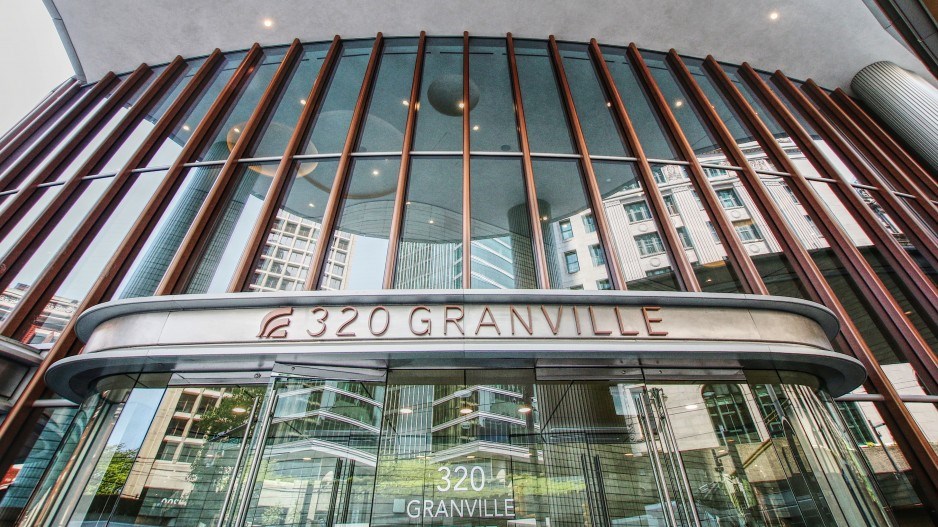Vancouver’s office construction boom is driving commercial real estate competition.
Office vacancies are rising as square footage continues to be added to the market. The increase in supply is rebalancing Vancouver’s office market after years of tight conditions characterized by record-low vacancy rates.
Downtown Vancouver’s office vacancy rate rose to 10.8 per cent in April – the first time the rate has been above 10 per cent since 2004, according to Avison Young.
Prior to the pandemic, the level of office vacancy in Vancouver was the lowest in North America at 2.2 per cent in Q4 of 2019, according to CBRE.
“I do think it is one of the largest increases in supply that we’ve seen over the last few years, [more] than Vancouver has experienced in the past, which is a major reason for the vacancy increase,” said Byron Chard, president and CEO at Chard Development Ltd.
“This is a great example of supply-demand and how more supply can come on and make the market a more competitive place. Which also means that landlords have to be offering more amenities to attract tenants’ interest – better mechanical systems and better offerings to attract tenants to the building.”
Office completions in the last quarter of 2022 and first quarter of 2023 have added significant square footage to Vancouver’s downtown core. The Stack, Bosa Development’s 320 Granville building Vancouver Centre II added a combined 1,075,000 square feet to the market, according to Avison Young.
Additionally, the south tower of Quadreal Property Group’s The Post development added 517,375 square feet, according to Colliers, and Deloitte’s new Summit office building added 355,000 square feet.
Overall, a combined 1.4 million square feet of new space was added in 2022.
“It was a perfect storm of new buildings being delivered and then really a specific sector pulling back on the amount of space that they were either going to occupy or they’re going to try to sublease,” said Glenn Gardner, principal and vice-president of the office division at Avison Young.
Technology companies are scaling back their office space demands as a result of a slowdown in the sector. The shift is driven by a desire to save costs by having employees work from home, said Gardner.
The three elements combined mean that tech companies are pulling back the most from Downtown Vancouver, he said.
The tech sector occupies roughly 80 per cent of all subleases downtown, according to Tim Holloway, director of innovation and insights at Avison Young.
Within Class AAA buildings, increases in vacancies are being seen on middle and lower floors as companies compete for views of the areas surrounding downtown Vancouver.
“No matter which downturn we reference, the high-rise-view premises have always had the lowest vacancy across all the building classes, traditionally. At the end of the day, people love to see the oceans and mountains and I can appreciate why,” said Gardner.
Almost all Class AAA vacancies – 82 per cent – are on lower and middle levels, according to Avison Young.
In contrast, Class A, B and C buildings have a more distributed level of vacancy. Within Class B and C options, specifically, lower levels offer discounted space. These tend to see a lower vacancy rate compared with upper – more expensive – floors.
Within Class A buildings, upper and middle levels are more prone to sublease activity.
The middle and upper levels of Class A sublease space accounts for 42 per cent and 40 per cent of vacancies, respective. On lower levels, sublease space represents 17 per cent, according to Avison-Young.
Overall, sublease space accounts for roughly one-third of all office vacancies in downtown Vancouver as of April, according to Holloway.
In order to attract employees back to the office, companies want a clean, safe and new space for workers to come back to, said Chard.
“You, as an employer, are doing more to attract your employee back to work and the landlord, we’re finding, is having to partner with their tenants to assist and be part of the solution to encourage employees back into the office,” he said.
“We’re even seeing that some really creative companies are partnering with local breweries, companies or donut shops to have that integration, which is also helping the community and those small businesses.”
Prior to the pandemic, when the downtown Vancouver office vacancy rate was at 2.2 per cent, companies had to renovate and work with their existing space if changes were needed.
“Having new supply come onto the market means that older buildings have to also upgrade and stay competitive. So, new supply coming onto the market is good, healthy and allows competition, which means innovation,” she Chard.
“[It] is going to be better for the end consumer.”




